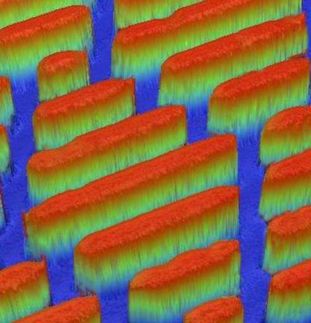Study finds fire stations contaminated with MRSA
MRSA transmission may be occurring in fire stations, according to a study published in the American Journal of Infection Control, the official publication of APIC – the Association for Professionals in Infection Control and Epidemiology.
The purpose of the study, conducted by investigators from the University of Washington School of Public Health, was to determine potential areas within the fire stations that were contaminated with methicillin-resistant Staphylococcus aureus (MRSA) and characterize the isolates to determine if they were related to hospital (HA-MRSA) and/or community (CA-MRSA) strains.
“This is the first study to molecularly characterize MRSA isolates from fire station environmental surfaces and the first study to sample both fire station surfaces and personnel as well as one of the first studies to characterize non-health care environmental MRSA,” commented lead investigator Marilyn C. Roberts, PhD, University of Washington School of Public Health.
Researchers assessed nine different areas in two fire stations that included 1) medic trucks; 2) fire trucks and fire engines; 3) outer fire gear; 4) garages; 5) kitchens; 6) bathrooms; 7) bedrooms; 8) gyms; and 9) other areas. After the first sampling, an educational program was conducted at each station, and hand sanitizers were installed. A second set of samples was collected 7-9 months later at the same two stations. During the second sampling, nasal samples were obtained from 40 healthy fire personnel from 13 stations to evaluate MRSA carriage.
A total of 1,064 samples were collected, 600 in the first sampling and 464 in the second. Each sample was analyzed for MRSA, staphylococci that were not S. aureus but were resistant to methicillin (labeled methicillin-resistant coagulase negative Staphylococcus spp. [MRCoNS]), and staphylococci that were not methicillin resistant (labeled as coagulase negative Staphylococcus spp. [CoNS]).
At the first sampling, 26 (4.3%) of the 600 surface samples were MRSA positive, with MRSA positive samples found in all nine areas sampled. The most common area for MRSA contamination was the medic trucks with 13 (50%), the kitchens with 3 (11.5%) and other areas such as computer keyboards and computer desks with 2 (7.7%).
At the second sampling, 18 (3.9%) of the 464 surface samples were MRSA positive, with MRSA positive samples again found in all nine areas sampled. The kitchen and outer gear both had 4 (22%) MRSA positive samples, while the medic truck had 3 (16.6%), other areas had 1-2 MRSA positive samples each. Two samples contained a strain of MRSA (MRSA SCCmec type II), which is commonly found in hospitals, and were isolated from the fire truck/engine and garage areas.
Thirty percent of the nasal cultures were positive for MRSA (9 samples) or S. aureus (3 samples). The majority (58%) of the nasal MRSA and S. aureus were genetically related to environmental surface isolates suggesting transmission between personnel and the environmental surfaces may be occurring.
Investigators conclude that "Fire personnel interact with both hospital and community population as part of their job and thus have the potential for exposure to MRSA from both sources…MRSA SCCmec type II isolates, commonly found in the hospital, were also identified in the study, demonstrated that both community- and hospital-like MRSA can contaminate the fire station surfaces. The isolation of the same strain in the fire apparatuses and garage as well as the living quarters suggests that the transmission of MRSA may be occurring between these two areas…Clearly more research is needed to determine if the current findings are representative of fire stations surfaces and personnel throughout the country."
Organizations
Other news from the department science

Get the life science industry in your inbox
By submitting this form you agree that LUMITOS AG will send you the newsletter(s) selected above by email. Your data will not be passed on to third parties. Your data will be stored and processed in accordance with our data protection regulations. LUMITOS may contact you by email for the purpose of advertising or market and opinion surveys. You can revoke your consent at any time without giving reasons to LUMITOS AG, Ernst-Augustin-Str. 2, 12489 Berlin, Germany or by e-mail at revoke@lumitos.com with effect for the future. In addition, each email contains a link to unsubscribe from the corresponding newsletter.





















































